 Virus &
Bacteria &
Diatoms &
Dinoflagellates &
Ascomycotes &Deuteromycotes
Virus &
Bacteria &
Diatoms &
Dinoflagellates &
Ascomycotes &Deuteromycotes
Virus
1. Viruses are about one half to one-hundredth the size of the smallest bacterium. Most biologists do not consider them to be alive because they don't fulfill all the criteria for life.
2. They do not carry out respiration or grow or move. All viruses can do is reproduce only inside a living cell. The cell in which they reproduce is called the host cell.
3. A virus consists of an inner core of nucleic acid surrounded by one or tow protein coats. Some relatively large viruses may have another layer, called the viral envelope, surrounding the outer coats.
4. The nucleic acid core of a virus contains the virus's genetic material. The nucleic acid in some viruses is DNA and in other it is RNA, but it is never both DNA and RNA.

HIV Virus
Bacteria
1. Bacteria are classified into two very different kingdoms Archaebacteria and Eubacteria. Many biochemical differences exist between three groups. Their cell walls and the lipids in their plasma membranes have different structures.
2. Bacteria are the smallest and simplest of living things. In terms of complexity, they fall between the nonliving viruses and the living eukaryotic, cellular organisms.
3. A bacterium has a cell wall that forms a rigid outer covering for the cell.
4. Penicillin kills bacteria by interfering with the enzyme that links the sugar chains in the cell wall. Bacteria growing penicillin develop holes in their cell walls.
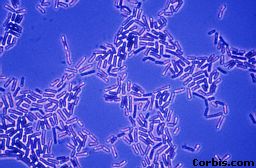
BaCtErIa
Diatoms
1. Diatoms, members of the phylum Bacillariophyta, are unicellular organisms with shells made of cilia. Diatoms are photosynthesis autotrophs, and they are abundant in both marine and freshwater ecosystems, where they make up a large component of the phytoplankton.
2. When diatoms reproduce asexually, the two halves of the box separate; each half the produces a new half to fit inside itself. With each new generation, half of the offspring are always smaller than the parent cells.
3. As photosynthesizing autotrophs, diatoms contain chlorophyll as well as other pigments called carotenoids that give the majority of them a golden yellow color.
4. When diatoms die, their glasslike remains sink to the ocean floor to join huge deposits of diatom shells that have been accumulating there for many millions of years.
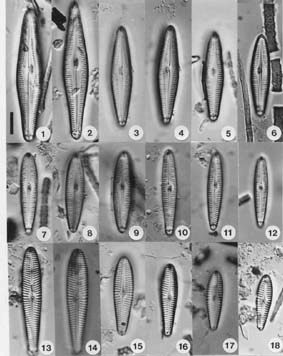
Diatoms
Dinoflagellates
1. Dinoflagellates, members of the phylum dinoflagellata, are unicellular algae that have cell walls made up of thick cellulose plated. They come in a great variety of shapes
2. Dinoflagellates are autotrophic and contain chlorophyll, carotenoids, and red pigments.
3. Dinoflagellates have two flagella located in grooves at right angles to each other. When these flagella beat, the cell spins slowly.
4. A few species of dinoflagellates are found in fresh water, but most are marine and are a major component of ocean phytoplankton.
5. Several species of dinoflagellates produce poisonous toxins. One species, Gonyaulax catanella, produces an extremely strong nerve toxin that can be lethal. In the summer, these minute organisms may undergo tremendous population explosions.
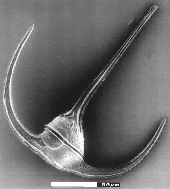
DiNoFlAgElLateS
Ascomycotes
1. The phylum AScomycates is the largest group of fungi, with about 30,000 species. They ascomycotes are known as sac fungi. Both names refer to the little saclike structures, each known as an ascus, in which the sexual spres of these fungi develop.
2. Most ascomycotes reproduce asexually by producing conidia. Conidia and conidiophores differ from species to species, making them important clues in identification.
3. Not all SAc fungi have a bad reputation. Morels, and truffles are edible members of the phylum. Pherhaps the most economically important ascomycotes are the yeasts.
4. Many ascomycotes are cup shaped or have multiple cup shape indentations. Asci line the inside of these cup shape sufaces.
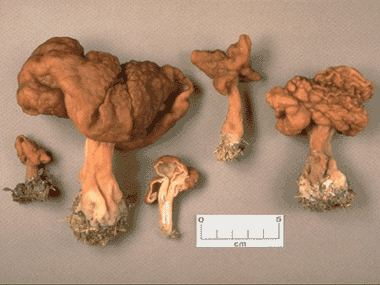
Ascomycotes
Deuteromycotes
1. Deuteromycota are imperfect fungi . They are characterized by a lack of a sexual phase in its life cycle. An example of a deuteromycote is penicillin.
2. These fungi reproduce only asexually or their sexually phase has not yet been observed by mycologists.
3. Shelf and bracket fungi are basidiomycotes often seen growing on tree branches and fallen logs.
4. Penicillin is an antibiotic produced from a deuteromycote, one that is commomly seen growing on fruit. Other deuteromycotes are used in making soy sauce and some kinds of blue- veins cheese. Citric acid, and fruit flavored candis their tart tast, produce in huge puantities using deuteromycote fungi.
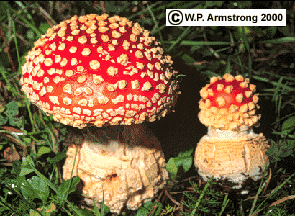
Deuteromycotes
 InDeX
InDeX
TOP
 Virus &
Bacteria &
Diatoms &
Dinoflagellates &
Ascomycotes &Deuteromycotes
Virus &
Bacteria &
Diatoms &
Dinoflagellates &
Ascomycotes &Deuteromycotes





 InDeX
InDeX